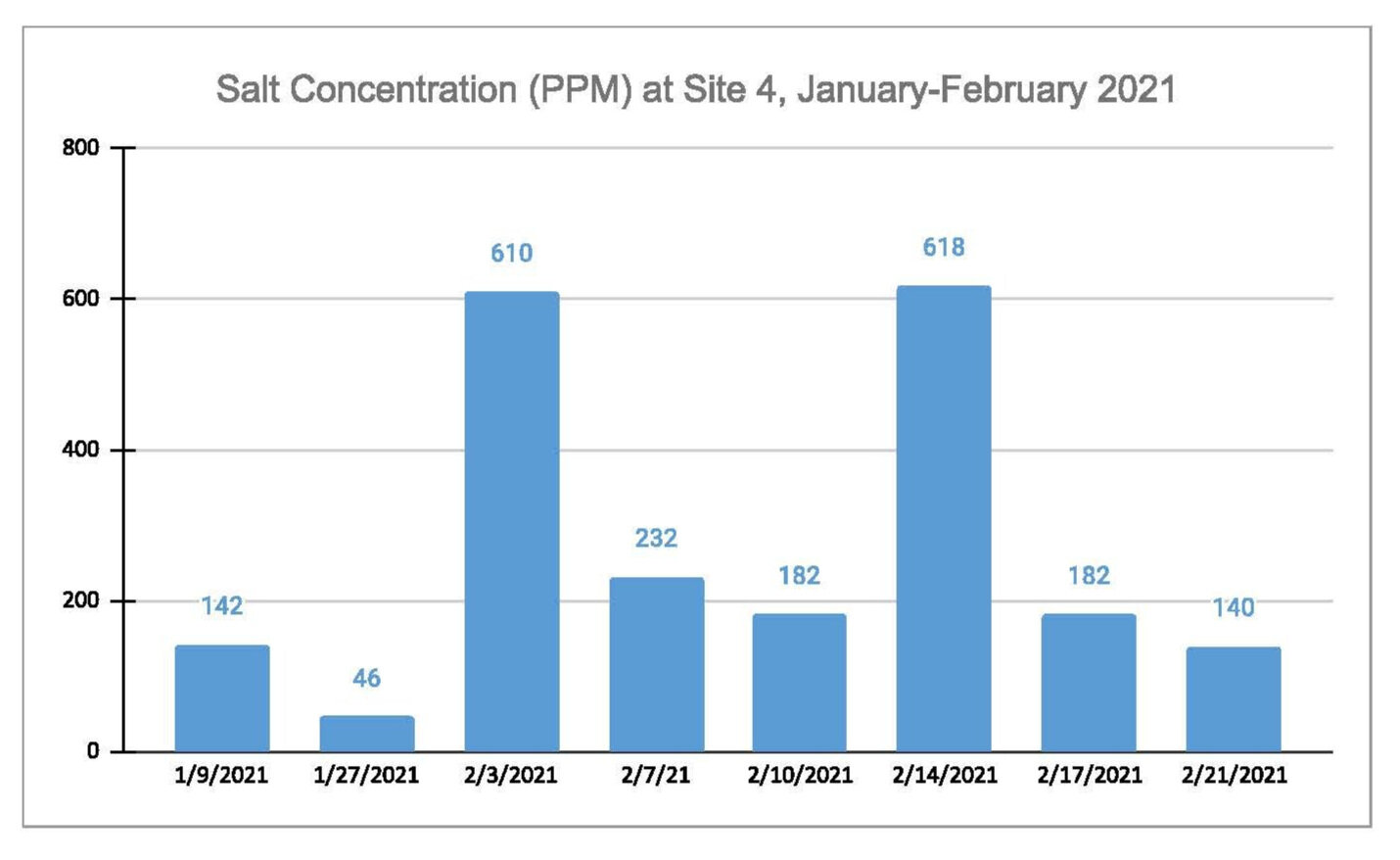During the past two months, LFWA volunteers have periodically measured salt concentration levels downstream from the Massachusetts Avenue overpass as part of a national Winter Salt Watch program sponsored by the Izaak Walton League. On two occasions, February 3rd and February 14th, measured concentrations were near acute toxicity levels for biological life (i.e. macro-invertebrates), which the EPA cautions should not occur more than once during a 3-year period. A “fair” level that animals can tolerate is usually from about 90-150 ppm; anything over over 230 ppm means that the water is toxic at some level to animal and plant life. Over 860 is acute toxicity.
Learn more about our program HERE.
Where Does the Salt come from?
Have you ever wondered what happens to the salt that is spread on the sidewalks, driveways, and roads in our neighborhood during a winter storm? When it melts or is plowed off, the salt seeps into the groundwater or runs off into local streams and flows into the Potomac River. While salt helps to melt or prevent the formation of ice and keep these surfaces safe, too much salt, also called chloride-based deicers, damages pavements and inhibits biological life in our streams. Salt is not biodegradable, accumulates over time, and has long-term corrosive effects and environmental impacts.
In our winter sampling, you can see the effect of salting and winter storms. Both the >600 readings were taken after snow storms. The January 27 reading was done before the storm at a baseline reading. Download the results HERE.
How does this impact the creek?
Salt toxicity is likely to be one reason the Little Falls Branch is currently rated as having poor water quality. At the winter sampling of biological life by out stream monitoring team, not only did were there very few organism, we were also missing the diversity of organisms that are essential to the health of the creek. Results from our recent benthic macro-invertebrate sampling can be found here.
what can you do to prevent salt toxicity?
Salt keeps us safe, but too much salt is a problem. It comes down to spreading the right amount at the right time and sweeping up the excess after a storm.
On your property:
Montgomery County recommends homeowners:
Shovel right away - don’t rely on salt to melt the snow.
Use salt sparingly - More is not better. When applied properly, it doesn’t take much to get the desired results. 12 ounces (a coffee cup full) will do 10 sidewalk squares or a 20 foot driveway.
Sweep up excess after the storm and save it for another day. This saves you money and keeps the unused salt from dissolving and polluting our waterways.
On the streets and public sidewalks:
Sweeping up excess salt is imperative to good salt management. If you notice salt spills, report them by calling 311. The County or DC Government will send someone out to clean them up. If they don’t, let your elected officials know.

